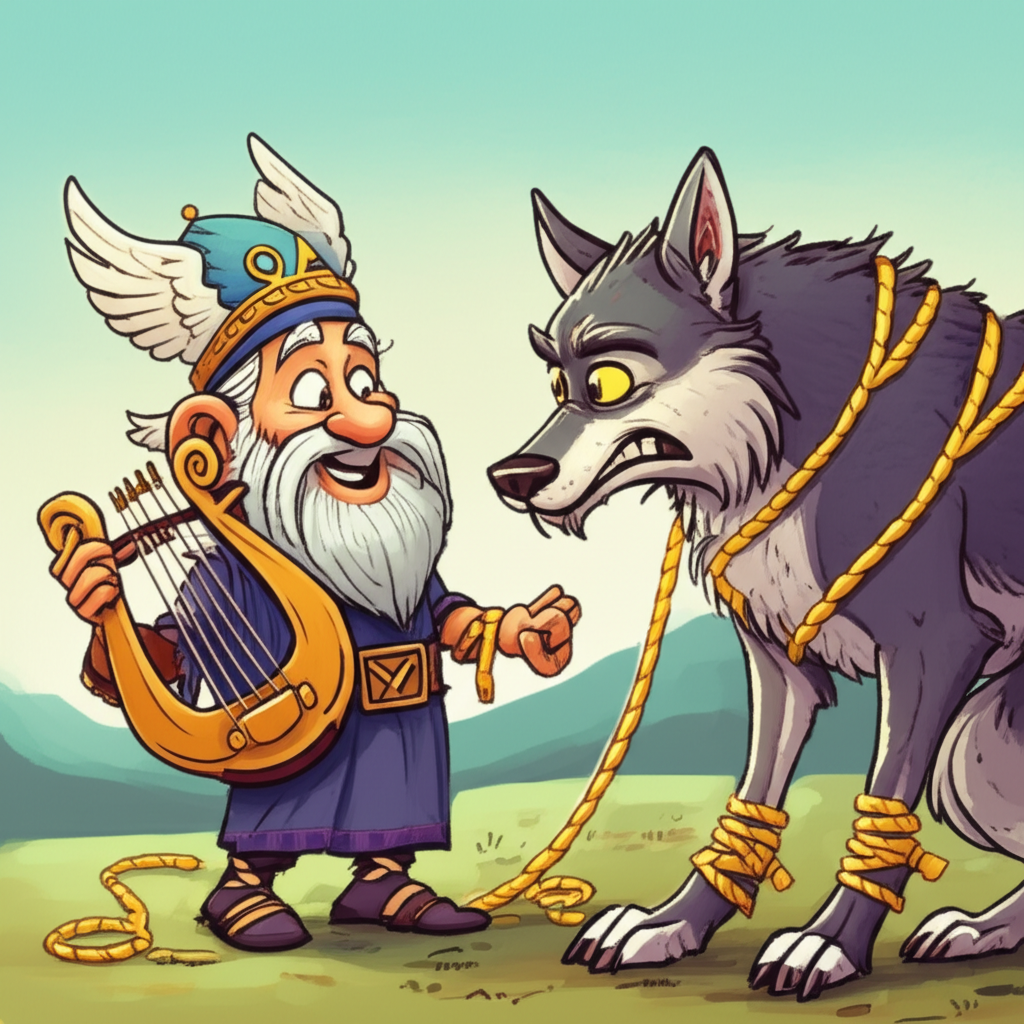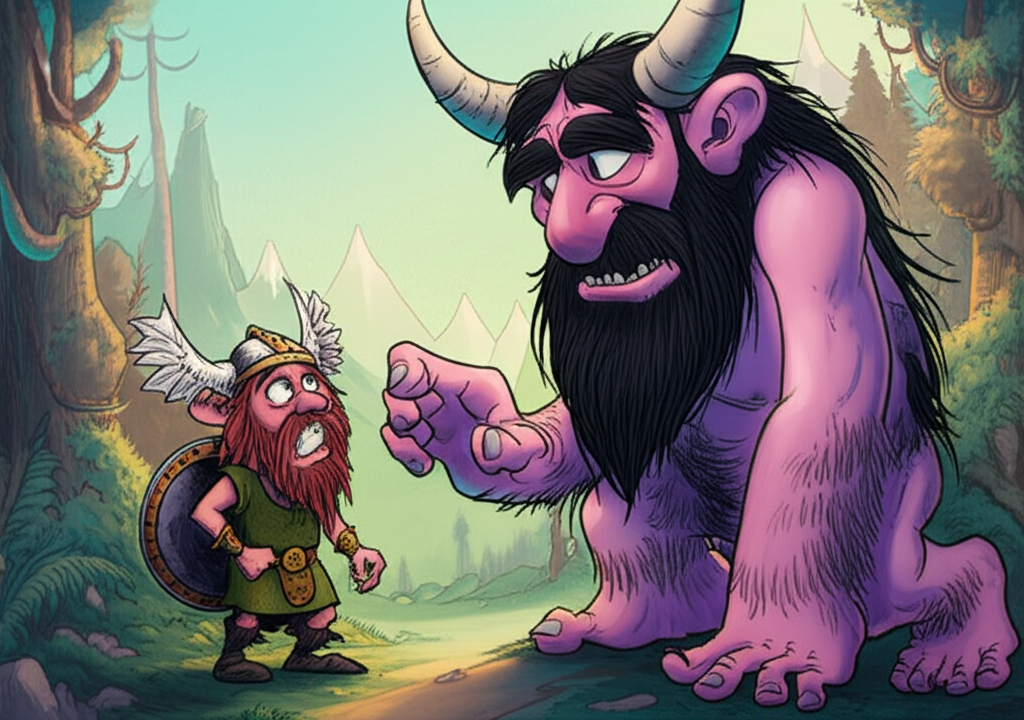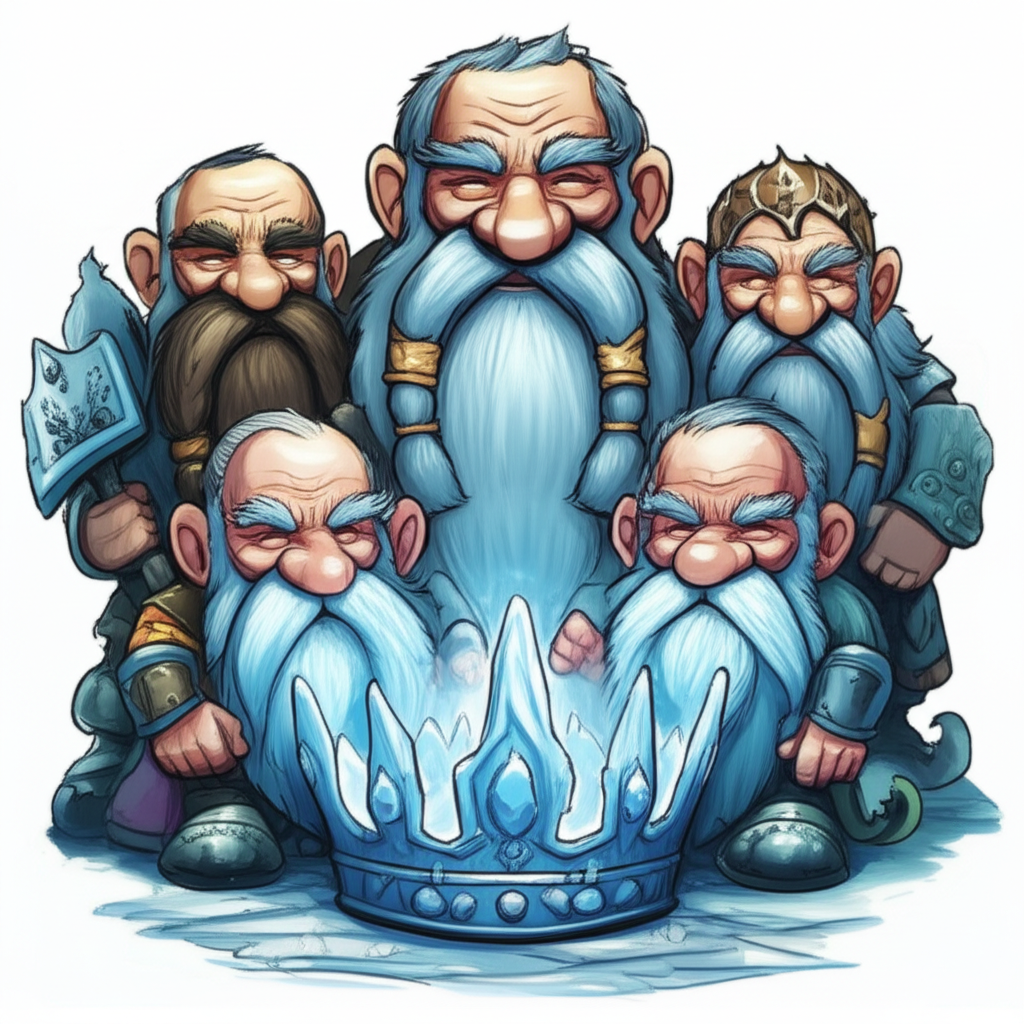
Introduction:
The tale of Bragi and the binding of Fenrir originates from Norse mythology, a rich tapestry of stories woven by the Vikings and other Germanic peoples of Scandinavia during the pre-Christian era. These narratives, passed down orally for generations before being written down, offer a glimpse into the worldview, values, and anxieties of a culture deeply connected to the natural world and constantly facing the challenges of survival. The story of Fenrir’s binding is a dramatic illustration of the Norse struggle against chaos and the eventual doom foretold to engulf the gods themselves. Let us remember that this is a traditional story, a creation of the ancient Norse people, not a statement of fact or a divine truth.
Origins and Cultural Background:
The Norse sagas and myths flourished during the Viking Age (roughly 8th to 11th centuries AD). This was a time of exploration, raiding, and trading, a period when the Norse people ventured across Europe and even to North America. Their world was one of harsh landscapes, long winters, and constant threats from both the elements and rival tribes. They lived in a society structured around kinship and honor, where courage, loyalty, and strength were highly valued.
The Norse saw the world as divided into different realms, including Asgard, home of the Aesir gods; Midgard, the world of humans; and Jotunheim, the land of the giants. Their understanding of the cosmos was cyclical, marked by a belief in Ragnarok, a catastrophic end to the world in which the gods would fight a final battle against the forces of chaos, ultimately leading to their own destruction. The myths, therefore, served not only as entertainment but also as a way to explain the world around them, to grapple with existential questions, and to prepare for the inevitable hardships of life.
Character / Creature Description:
-
Bragi: He is the Norse god of poetry, eloquence, and skaldic art. Depicted as an old man with a long flowing beard, Bragi is the divine bard of Asgard. He is known for his wisdom, his ability to craft beautiful verses, and his deep understanding of the lore of the gods. Symbolically, Bragi represents the power of language, the importance of memory, and the ability of art to shape and preserve cultural knowledge.
-
Fenrir (or Fenrisúlfr): A monstrous wolf, one of the children of Loki, the trickster god, and the giantess Angrboða. Fenrir is prophesied to play a pivotal role in Ragnarok, the end of the world, where he is destined to devour Odin, the Allfather. From a pup, Fenrir grew at an alarming rate, becoming an immense and terrifying beast. Symbolically, Fenrir represents untamed chaos, the destructive forces of nature, and the overwhelming fear of the unknown. His insatiable hunger and unbridled power embody the potential for destruction that lies dormant within the world.
Main Story / Narrative Retelling:
The Aesir gods, dwelling in the glittering halls of Asgard, were deeply troubled by the prophecy surrounding Fenrir. This monstrous wolf, offspring of Loki, grew at an alarming rate, his power and ferocity becoming a palpable threat to the peace of the realms. The gods, led by Odin, knew that if left unchecked, Fenrir would bring about Ragnarok, the twilight of the gods.
They first attempted to bind Fenrir with a chain called Leding. Fenrir, flexing his immense muscles, effortlessly snapped the chain as if it were mere twine. Undeterred, the gods forged a second chain, Dromi, twice as strong as the first. Again, Fenrir allowed them to bind him, but with a mighty roar, he strained against the links, shattering them into countless fragments.
Desperate, Odin sent Skirnir, a messenger of Freyr, to the dwarves in Svartalfheim. These master craftsmen forged a magical bond called Gleipnir. Unlike the previous chains, Gleipnir was smooth and slender, made from seemingly harmless ingredients: the sound of a cat’s footfall, the beard of a woman, the roots of a mountain, the sinews of a bear, the breath of a fish, and the spittle of a bird.
The gods, with a mixture of hope and trepidation, brought Gleipnir to Fenrir on the island of Lyngvi. They proposed a test of his strength. "If you can break this slender ribbon," they said, "we will know you are truly as mighty as the prophecy foretells." Fenrir, suspicious of the chain’s lightness, eyed the gods warily. He saw the fear in their eyes and sensed a trick.
"If I cannot break this ribbon," Fenrir said, his voice a deep rumble, "what glory is there for me? I will only agree to be bound if one of you places your hand in my mouth as a pledge of good faith."
The gods exchanged nervous glances. Who would risk their hand in the jaws of the monstrous wolf? It was Bragi, the god of poetry, known for his wisdom and diplomacy, who stepped forward, not to offer his hand, but to weave words of reassurance. He spoke of honor, of courage, and of the importance of keeping one’s word. But his words, however eloquent, could not dispel the palpable dread.
Finally, Tyr, the god of justice and courage, known for his integrity, stepped forward and bravely placed his right hand into Fenrir’s gaping maw. The gods then bound Fenrir with Gleipnir. The wolf strained, he pulled, he roared, but the magical chain held firm. The more he struggled, the tighter Gleipnir became.
Realizing he had been tricked, Fenrir snapped his jaws shut, severing Tyr’s hand. The god of justice cried out in pain, but the binding was complete. The gods then fastened the chain to a massive rock called Gelgja and drove a sword deep into Fenrir’s jaws to keep them agape.
Symbolism and Meaning:
The story of Fenrir’s binding is rich with symbolism. It represents the eternal struggle between order and chaos, the human desire to control the uncontrollable, and the inevitability of fate. The different chains represent the varying methods humans employ to manage threats, from brute force to cunning and deception. Gleipnir, made from seemingly harmless ingredients, symbolizes the power of subtle forces to overcome even the most formidable adversaries.
Tyr’s sacrifice represents the cost of maintaining order and upholding justice. He embodies the willingness to make personal sacrifices for the greater good, even when it involves immense pain and loss. Fenrir’s eventual release at Ragnarok underscores the Norse belief in the cyclical nature of existence and the inevitability of destruction, even after periods of relative stability.
Modern Perspective:
The myth of Fenrir continues to resonate in modern culture. He appears in various forms of literature, movies, and video games, often as a symbol of untamed power, a force of destruction, or a misunderstood creature. His story is often used to explore themes of fear, control, and the consequences of unchecked ambition. In cultural studies, the myth is analyzed for its insights into Norse cosmology, social values, and the human condition.
Conclusion:
The tale of Bragi and the binding of Fenrir is a powerful and enduring story from Norse mythology. It offers a window into the worldview of the ancient Norse people, their beliefs about the cosmos, and their values. It is important to remember that this is a cultural story, a product of human imagination, and not a statement of fact or a divine truth.
As Muslims, we believe that only Allah is the true Creator and Sustainer of the universe. These mythological stories, while fascinating, are not part of our faith. However, they remain valuable as examples of human creativity, storytelling tradition, and cultural heritage. They allow us to explore the diverse ways in which people have sought to understand the world around them and to grapple with the fundamental questions of existence.





